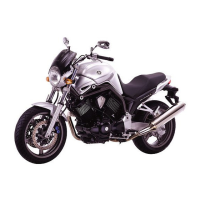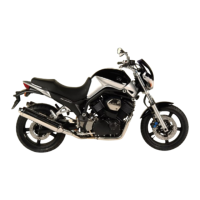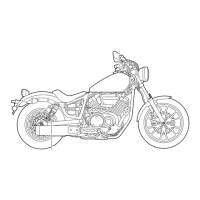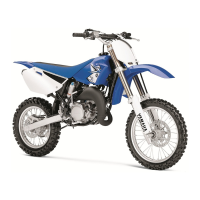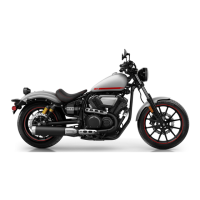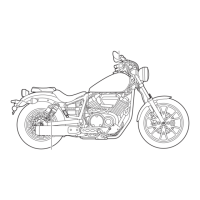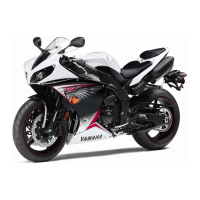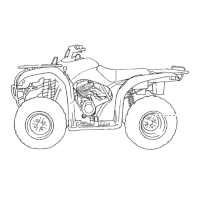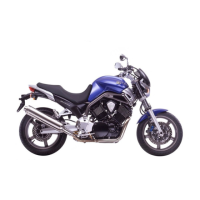
Do you have a question about the Yamaha Bulldog BT1100 and is the answer not in the manual?
| Displacement | 1063 cc |
|---|---|
| Bore x Stroke | 95.0 mm x 75.0 mm |
| Compression Ratio | 8.3:1 |
| Ignition | TCI |
| Starter System | Electric |
| Transmission | 5-speed |
| Final Drive | Shaft |
| Ground Clearance | 140 mm |
| Fuel Capacity | 20 liters |
| Maximum Power | 65 hp (48 kW) @ 5, 500 rpm |
| Maximum Torque | 88 Nm (65 lb-ft) @ 4, 500 rpm |
| Front Suspension | Telescopic fork |
| Rear Suspension | Monoshock |
| Front Brakes | Dual discs, 298 mm |
| Rear Brakes | Single disc |
| Front Tire | 120/70 ZR17 |
| Rear Tire | 170/60 ZR17 |
Explains the meaning of the Safety Alert Symbol for user awareness.
Details consequences of not following instructions and special precautions.
Identifies components visible from the left side of the motorcycle.
Identifies components visible from the right side of the motorcycle.
Details the switches, levers, and instruments on the handlebars.
Explains operation of the main switch and steering lock positions.
Describes the function of various indicator and warning lights on the instrument panel.
Details the functions of the speedometer, tachometer, and odometer.
Explains the operation of various handlebar switches like turn signals, horn, etc.
Operation of engine stop switch, start switch, and starter (choke) lever.
Explains operation of brake levers/pedals and shift pedal for control.
Instructions for checking fuel level and lines before riding.
Procedure for checking engine oil level and for leaks.
Checks for front brake operation, fluid level, and leaks.
Checks wheels for damage and tires for condition and pressure.
Checks the ignition circuit cut-off system related to the sidestand.
Step-by-step guide to starting the motorcycle engine.
Explains how to shift gears and the gear position layout.
Guidelines for breaking in the engine during the initial period of use.
Instructions and precautions for parking the motorcycle.
A chart detailing maintenance intervals and tasks for various components.
Covers essential engine upkeep like spark plugs, oil, filters, and adjustments.
Procedures for inspecting and servicing the brake system components.
Covers tire inspection, pressure, and care for optimal performance and safety.
General guidance on troubleshooting motorcycle issues and identifying problems.
Detailed steps and precautions for cleaning the motorcycle effectively.
Instructions for short-term and long-term storage to protect the motorcycle.
Details engine type, displacement, bore, stroke, and oil requirements.
Information on frame, tires, wheels, brakes, and suspension components.
Details about the battery, lights, fuses, and charging system.
Details on recording key, vehicle, and model identification numbers.
Information on locating and recording data from the model label.
